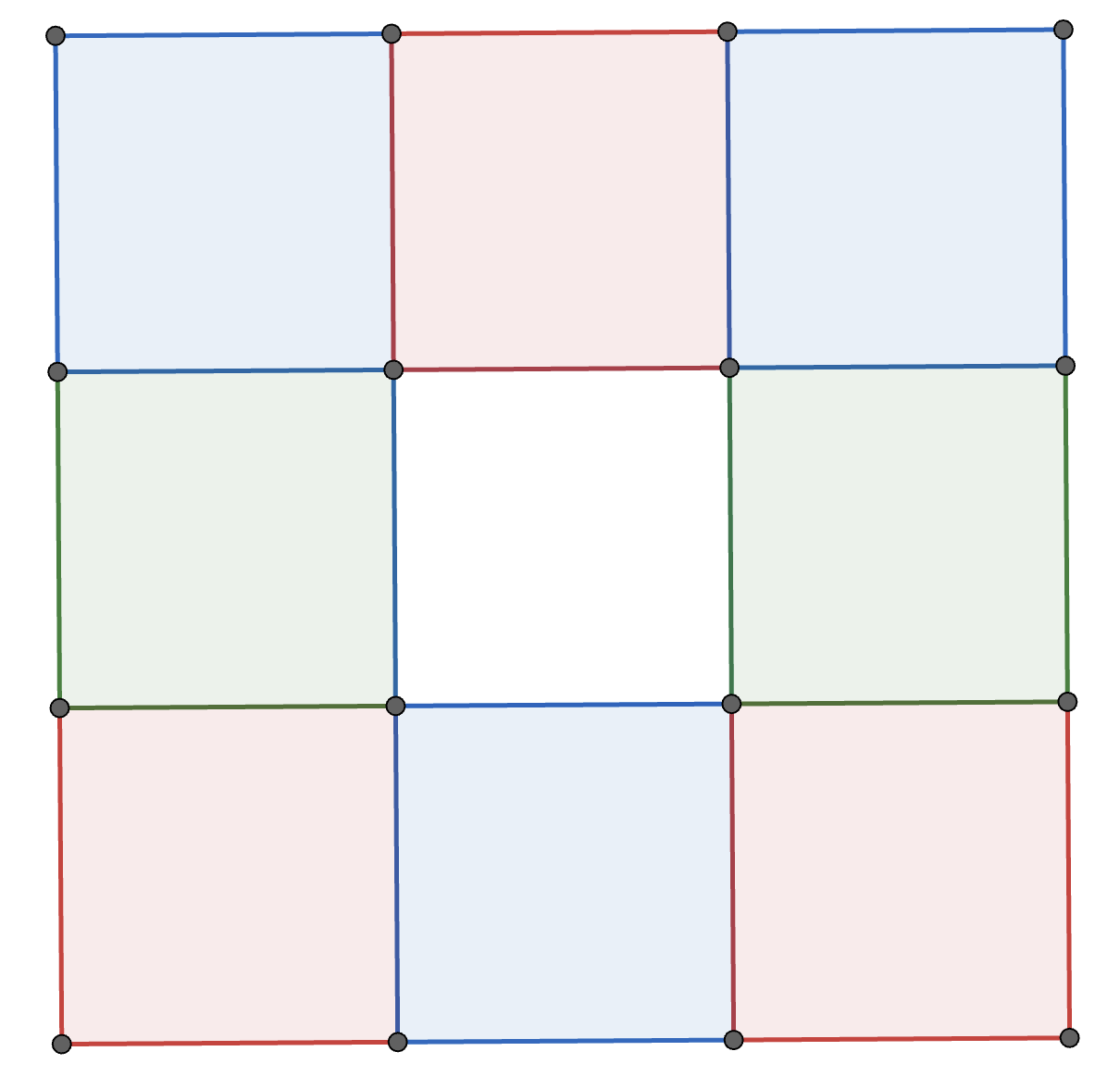Problems
How can you move the top card to any position in an even size deck using only Faro shuffles?
You have a deck of \(n\) distinct cards. Deal out \(k\) cards from the top one by one and put the rest of the deck on top of the \(k\) cards. What is the minimum number of times you need to repeat the action to return every card back to its position?
Take a pile of cards, Ace to 7 of Diamonds. Consider the following shuffle: simultaneously move the first card to the third position, the third card to the fifth position, the fifth card to the seventh position, and the seventh card to the first position. Also move the second card to the fourth position, the fourth card to the sixth position and the sixth card to the second position.
How many times do you have to do this one specific shuffle in a row to get back to where you started?
How many permutations are there of 4 cards leaving no card in the same position as before?
Each square in a \(3\times3\) grid of squares is coloured red, white, blue, or green so that every \(2\times2\) square contains one square of each color. One such colouring is shown below. How many different colourings are possible?

Given a pile of five cards, is it true that reversing the order of the pile by counting the cards out one by one leaves no card in its original position?
With a pile of four cards, does reversing the order of the pile by counting the cards out one by one leaves no card in its original position?
You have in your hands a royal flush! That is, Ace, King, Queen, Jack and \(10\) of spades. How many shuffles of your hand swap the Ace and Jack?
There are two imposters and seven crewmates on the rocket ‘Plus’. How many ways are there for the nine people to split into three groups of three, such that each group has at least two crewmates? The two imposters and seven crewmates are all distinguishable from each other, but we’re not concerned with the order of the three groups.
For example: \(\{I_1,C_1,C_2\}\), \(\{I_2,C_3,C_4\}\) and \(\{C_5,C_6,C_7\}\) is the same as \(\{C_3,C_4,I_2\}\), \(\{C_5,C_6,C_7\}\) and \(\{I_1,C_2,C_1\}\) but different from \(\{I_2,C_1,C_2\}\), \(\{I_1,C_3,C_4\}\) and \(\{C_5,C_6,C_7\}\).
King Hattius has three prisoners and gives them the following puzzle. He will put a randomly coloured hat on each of their heads: red, blue or green. He’ll then give them \(10\) seconds for them to each guess their own hat’s colour at the same time.
However! Each prisoner can only see the other two prisoners’ hats, not their own. There are no mirrors in the prison, and they are not allowed to take off their hat, nor talk, mouth, use sign-language, or otherwise communicate with the other two prisoners during those ten seconds.
Hattius tells them that he’ll release them all if at least one correctly guesses their hat’s colour. He gives them an hour to come up with a strategy - what should their strategy be?